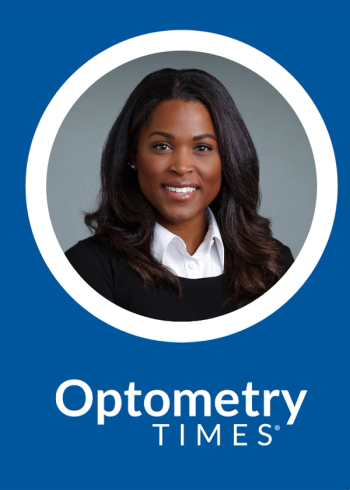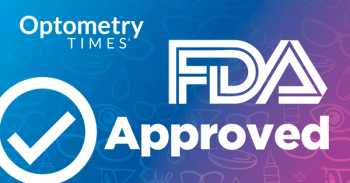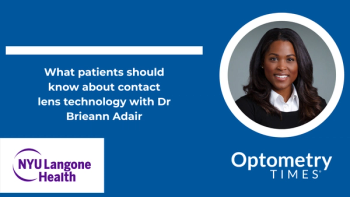
Presbyopia: Revolutionary research lines
Patients present with a plethora of complaints, with blurred near vision, headache, fatigue, need for increased working distance and brighter light to read among the most common, according to Cecelia Koetting, OD, during AOA 2022.
Reviewed by Cecelia Koetting, OD, FAAO
“Curing” presbyopia may be one of the final frontiers for vision care specialists. In addition, almost no one escapes its grasp, and with the aging of the Baby Boomer population, greater and greater numbers of patients will seek relief.
Patients present with a plethora of complaints, with blurred near vision, headache, fatigue, need for increased working distance and brighter light to read among the most common, according to Cecelia Koetting, OD, who is in private practice in Denver, Colorado.
Patients have historically relied on the use of over-the-counter readers, prescription lenses, and contact lenses to alleviate the effects of this annoying visual disorder.
However, the industry has been working diligently to provide other options that range from premium intraocular lenses (IOLs) to crosslinking and refractive surgeries.
High-tech IOLs
Advanced technology IOLs are not limited to just replacing the crystalline lens after cataract surgery; they also are designed to perform a range of ocular duties to satisfy patients’ postoperative visual goals, such as accommodation (CrystaLens, Bausch + Lomb), multifocality (Tecnis multifocal, Johnson and Johnson Vision; AcrySof ReSTOR, Alcon), and more advanced multifocal designs (Tecnis Symfony, Abbott Medical Optics), a diffractive extended-depth-of-focus (EDOF) IOL, and the ActiveFocus multifocal IOL (Alcon).
Other unique designs include trifocal IOLs that provide composite binocular vision at 3 distances, and a non-diffractive EDOF IOL (Vivity, Alcon) that stretches and shifts the wavefront.
Johnson and Johnson introduced the Tecnis Synergy and toric IOL, which provides continued vision from distance to near, and the Tecnis Eyhance, the first monovision IOL available in Europe that provides improved intermediate and 20/20 distance vision.
The Light Adjustable Lens (RxSight), a 3-piece design, is adjusted by ultraviolet light after implantation to correct for astigmatism over 0.75 diopter; more than 90% of patients achieved vision within 0.5 diopter of the target refraction.
Future accommodating IOLs
On the horizon is a modular IOL, Harmoni (ClarVision), that provides accommodation, multifocal and trifocal capabilities, and EDOF. Another accommodating IOL, but not yet FDA approved, is the Juvene (LensGen, Inc.), also a modular and a curvature-changing, fluid-optic 2-piece IOL, providing up to 3 diopters of continuous range vision.
Two additional accommodating IOLs are the Fluidvision Lens (Powervision Inc.) and the Lumina (AkkoLens).
The former lens is hollow and filled with silicone with an average accommodative range of 2 diopters; the latter is a 2-piece sulcus IOL with shifting optics that can provide from 3 to 4 diopter focal range when shifted.
An aspheric diffractive trifocal IOL, PhysIOL (Beaver-Visitec International), has 2 diffractive structures that add 3.5 diopters of near vision and cause less glare and fewer halos.
The IC-8 IOL (AcuFocus), a single-piece hydrophobic acrylic lens, has a pinhole IOL design.
Innovative surgeries
piXL for presbyopia (Avedro), an epithelium-on crosslinking procedure, uses drops and ultraviolet light, to remodel the cornea without ablation or an incision.
A micro-insert system (Refocus Vision Group), in clinical trials, is a scleral-based approach to addressing presbyopia and the only binocular restorative procedure; 100% of study patients achieved J3 or better.
The ReLEx SMILE: small incision lenticule extraction procedure, FDA-approved in 2016, uses a femtosecond laser to create a small pocket from which a disc or tissue is removed.
Another lenticular procedure is the presbyopic allogenic corneal inlay that increased the central corneal power to improve near vision.
Laser-induced refractive index changes for refractive error correction (LIRIC) is a minimally invasive disruptive technology that can be used in refractive and cataract surgery and with contact lenses.
Drug therapy
Four drug categories address presbyopia in different ways: pilocarpine causes miosis; carbachol decreases the pupil size; brimonidine tartrate inhibits the iris dilator muscle; and aceclidine targets a pinhole effect.
Vuity (Allergan) utilizing pilocarpine, is the only current FDA-approved drop for presbyopia. The phase 3 GEMINI 1 and 2 studies, respectively, showed that 31% and 26% of patients gained 3 or more lines of binocular distance-corrected near vision.
Nyxol (Ocuphire Pharma), with low-dose pilocarpine, provided 63% of patients with 3 or more lines of binocular near vision.
Brimochol (Visus Therapeutics) is dual-mechanism drop, utilizing both carbochol (cholinergic agent) and brimonidine tartrate. The average improvement in near vision was more than 5 lines with no complaints of brow ache or loss in distance vision.
CSF-1 optimal balance (Orasis), currently in phase 3 studies, also provided 3 lines of improved near vision in a phase 2b study.
LNZ100 (aceclidine, Lenz Therapeutics), which targets the sphincter, showed at least 2 lines of improved near vision in 81% of patients by 30 minutes after instillation. The other formulation, LNZ101, mixes the effect of aceclidine with brimonidine.
A combination product, EyeFocus (Osrx Pharmaceuticals) includes pilocarpine; the product is not currently in clinical studies. The initial proof-of-concept study showed promise with 66% of patients having 20/40 near vision 1 hour after instillation that was maintained in 78% of patients for 3 hours.
“It’s an exciting time in presbyopia--only do we have our tried and true treatments, but we now have more options to offer our patients. I don’t see these additions as an either/or, but an and. We can mix and match to the patients’ needs,” Koetting said.
Newsletter
Want more insights like this? Subscribe to Optometry Times and get clinical pearls and practice tips delivered straight to your inbox.



















































.png)


